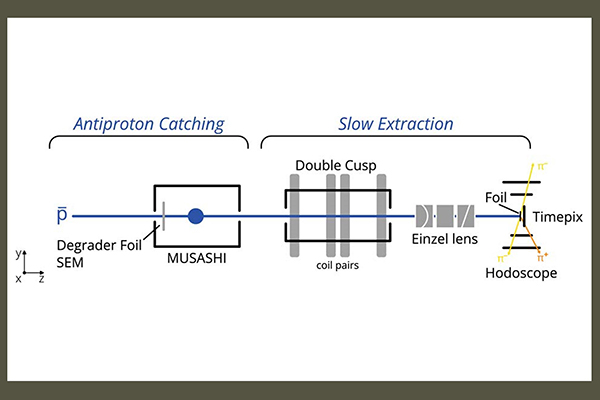Antiproton annihilation at rest in thin solid targets and comparison with Monte Carlo simulations

The mechanism of antiproton nucleus annihilation at rest is not fully understood, despite substantial previous experimental and theoretical work.
A recently published paper described how slow extracted antiprotons from the ASACUSA apparatus at CERN were used to measure the charged particle multiplicities and their energy deposits from antiproton annihilations at rest on three different nuclei. The study investigated antiproton nucleus annihilation at rest in thin (1-2 µm) targets using a 150 eV antiproton beam. The goal was to validate Monte Carlo simulation models (Geant 4 and FLUKA) by comparing their predictions of charged particle emission from carbon, molybdenum, and gold targets to experimental data.
FLUKA demonstrated superior performance in predicting the production of Minimum Ionizing Particles (and Heavy Ionizing Particles (two quantities tightly bound to final state interactions between initially produced mesons and residual nuclei. FLUKA's predictions agreed with experimental data within 20% relative precision. However, a larger discrepancy (15%) was observed for HIP production in gold targets compared to a previous study, potentially due to the thinner target used in our experiment. This thinner target allowed for the detection of lower energy particles that could not escape thicker targets.
Among the Geant 4 models, CHIPS and INCL showed similar performance, outperforming FTFP in reproducing fragment multiplicities However, CHIPS has been discontinued. While FTFP underestimates HIP production significantly, it provides the most accurate predictions of deposited energy for heavy prongs. To further investigate annihilation mechanisms and final state interactions, new experiments are needed to improve particle identification capabilities, particularly for heavy ionizing particles.
A promising approach involves studying annihilations in light nuclei (e.g. Be, C) to isolate specific final state interactions. Our next project at the AD/ELENA facility will involve a detailed, systematic study of antiproton nucleus annihilation at rest, covering approximately 15 different nuclei. This study will measure the total multiplicity, kinetic energy, and angular distribution of charged prongs in nearly 4 π solid angle, providing valuable insights into final state interactions and enhancing our understanding of antiproton nucleus interactions at low energies. The resulting dataset will also serve as a benchmark for validating current and future simulation models.
For further information please see Amsler C Breuker H Bumbar M et al Antiproton annihilation at rest in thin solid targets and comparison with Monte Carlo simulations Eur Phys J A 60 225 2024
https :://doi org/ 10 1140 /epja/s 10050 024 01428 x